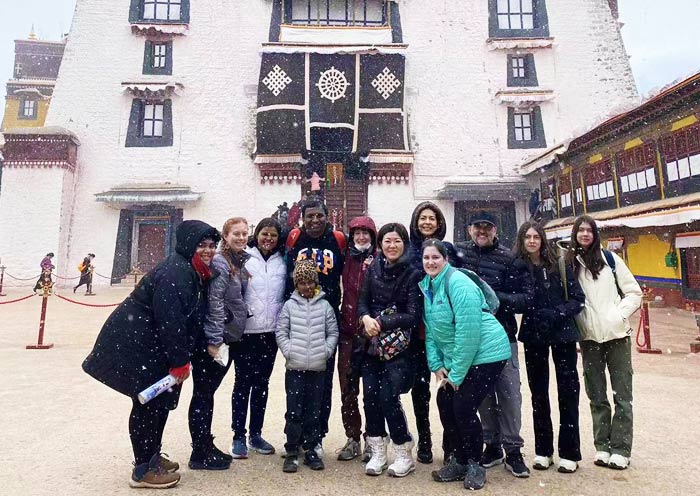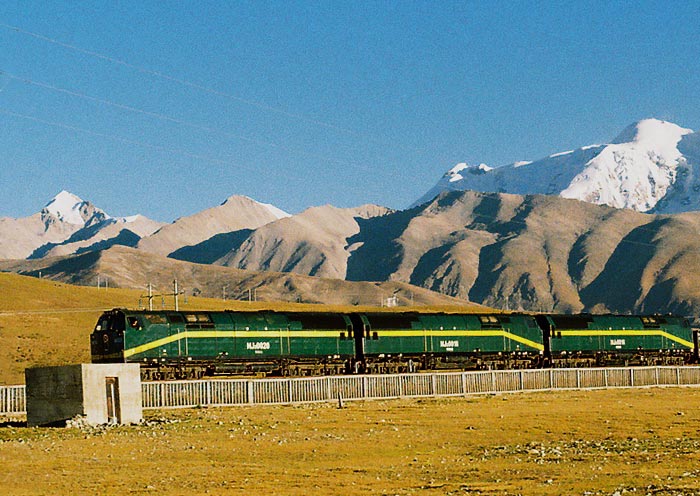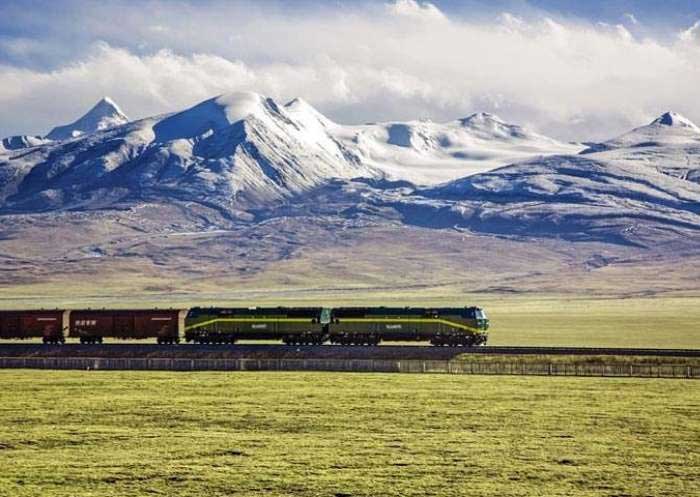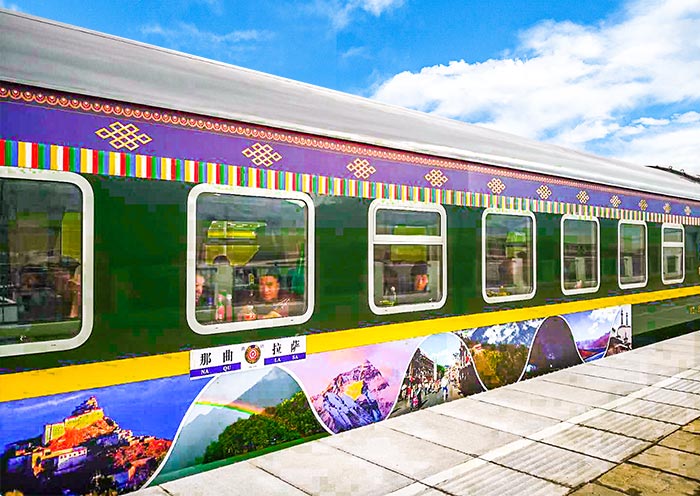Lhasa Railway Station Exit Guide Overview
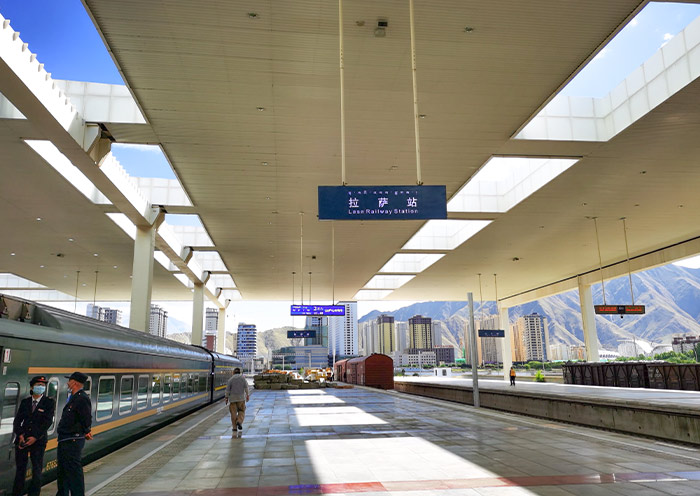

Lhasa Railway Station is the only train station in Lhasa, the capital city of Tibet. It is located on the south bank of the Lhasa River, approximately 8 kilometers away from the famous Potala Palace. Similar to most train stations in China, Lhasa Railway Station consists of a station square, the departure and arrival hall, and the platforms.
Upon arrival at the platform, passengers need to disembark with their luggage and proceed from the platform to the hall. In the hall, there are checkpoints where passengers undergo ID checks before exiting the hall and entering the station square, completing the process of exiting the station.
However, unlike other train stations in China, Lhasa Railway Station has an additional step for exiting, which involves the verification of the Tibet Travel Permit. For foreign visitors, this permit is essential for traveling to Tibet by train. After leaving the hall, you need to go to the police station inside the station to have your Tibet Travel Permit and passport verified. Once this process is complete, you can continue to exit the station and proceed to the designated pick-up area in the station square to meet your Tibetan guide. The map below provides an overview of Lhasa Railway Station, with the red line indicating the route for exiting the station.

Step 1: Get off Tibet Train
After the train arrives, please gather your luggage and personal belongings and disembark from the train. Follow the signs on the platform to the door leading to the hall.

The Qinghai-Tibet train usually consists of 12 carriages, with a total length of approximately 280 meters. The soft sleeper carriages are usually located at the front or rear of the train, and it typically takes about 100 meters to reach the exit door of the platform. It may take around 5 minutes to walk off the train, and then follow the crowd to the entrance door of the hall to wait for the exit. This process usually takes at least 10 minutes.
We recommend that you prepare your luggage and personal items in advance (usually announced through a broadcast) before the train arrives at Lhasa Railway Station, to avoid leaving any belongings or luggage on the train. Keep your mobile phone, identification documents, and Tibet Travel Permit in a small bag that is easily accessible, to be prepared for the subsequent exit process.
Step 2: Go through ID Check with Your Passport and Exit the Hall
When traveling by train in China, paperless train tickets have become the norm. This approach not only contributes to environmental protection but also provides convenience for travelers. Passengers only need to present their identification documents used for purchasing the train ticket to quickly enter and exit the station.
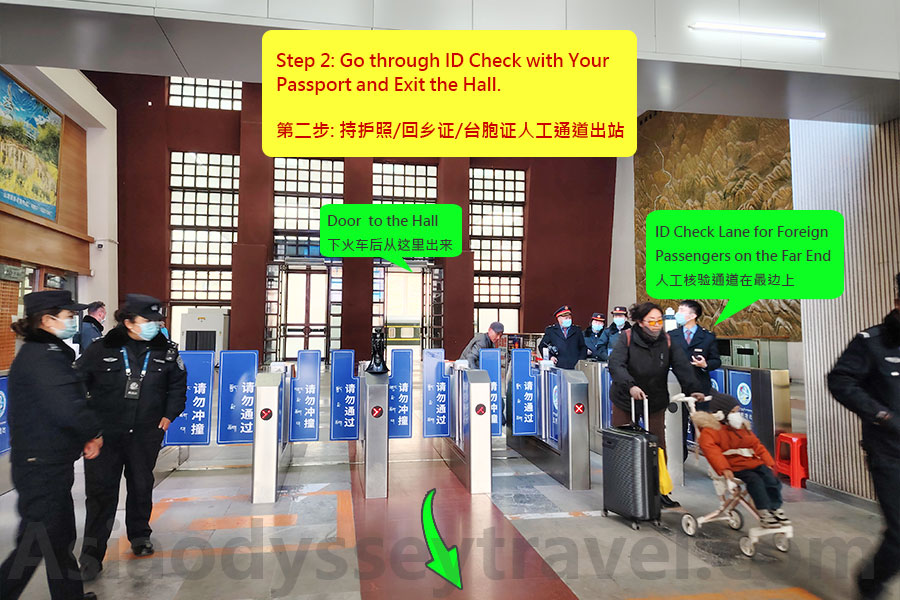
In the arrival hall of Lhasa Railway Station, there are usually several self-service ticket gates where passengers can swipe their ID cards to exit the station directly. There is also a manual inspection lane on the outer side for foreign passengers with passports and Hong Kong, Macau, and Taiwan passengers with their respective permits.
In the spirit of ensuring a quick exit, the verification of the Tibet Travel Permit is generally not conducted at this point, as it would take more time and potentially cause congestion at the exit gate.
Step 3: Find the Police Station for Permit Check
After exiting the hall, foreign visitors and Taiwanese visitors need to proceed to the local police station within the train station to have their Tibet Travel Permit and passport details checked. Only after the verification is accurate and correct can you leave the train station.
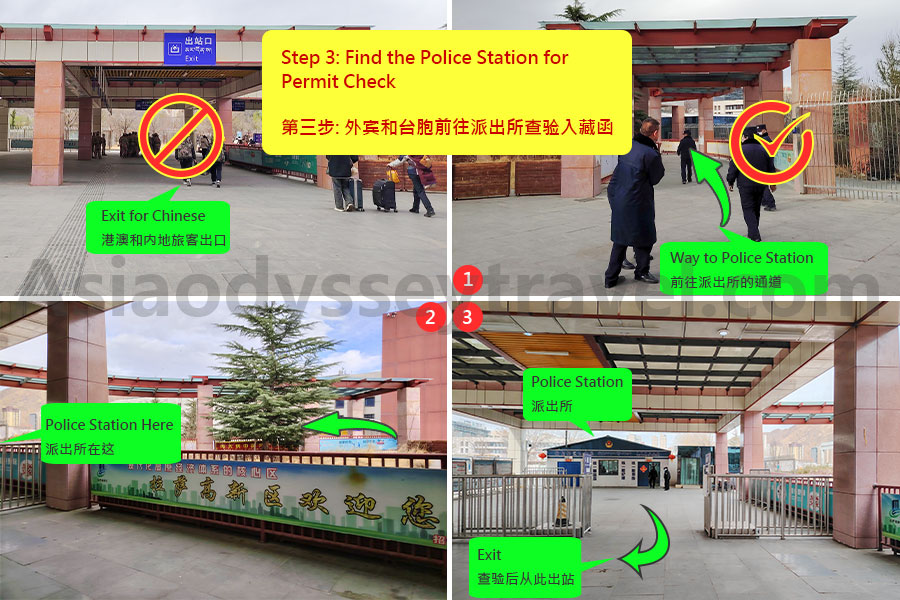
Upon leaving the hall, you will see a spacious pavilion with a roof, and the sign "Exit" indicating the exit for mainland Chinese and Hong Kong, Macau visitors. However, please remember that as a Taiwanese visitor or foreign guest, you need to walk along the covered walkway on the right side for about 40 meters to reach the police station located 50 meters away. The police station is a small building with a blue roof and white walls, displaying the national emblem of China.
The police station is located at the end of the walkway. The process of checking your identification documents usually takes a few minutes. There is no need to be nervous during this process, as it is a simple and routine procedure, and the staff members are professional and friendly. As long as you have successfully obtained the Tibet Travel Permit through our travel agency and your passport is valid, there is no need to worry.
Step 4: Leave the Train Station and Meet Your Tour Guide
After completing the document verification at the police station, proceed towards the exit. However, please note that your tour guide will not be able to meet you at the exit. They will generally be waiting for you at the intersection of the station square and the road, which is about 80 meters away.
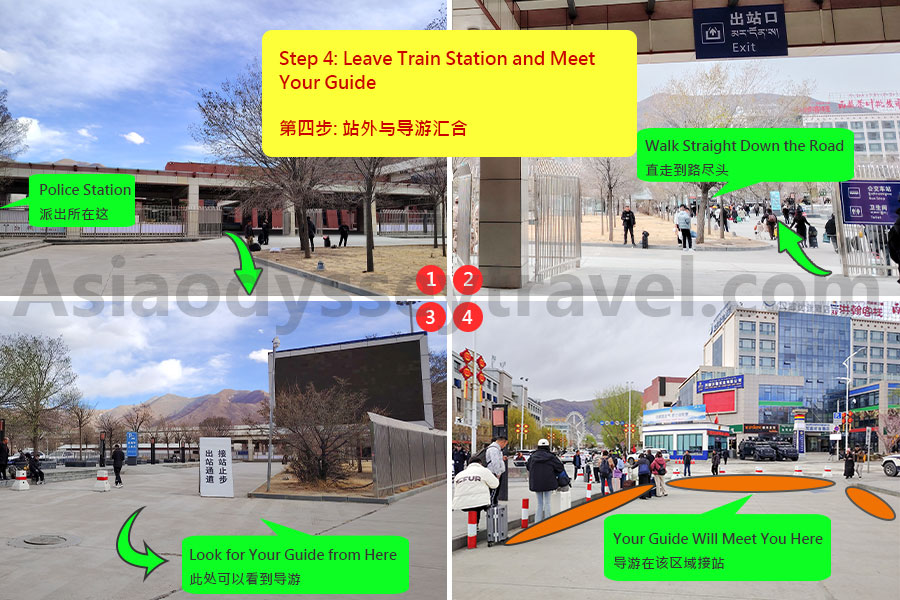
Continue walking along the straight passage until you reach the end, where you will see a large electronic screen. From there, you should be able to spot your tour guide waiting for you in an open area about 10 meters away from the electronic screen.
Congratulations on fulfilling your dream of traveling to Lhasa by the Qinghai-Tibet train, the highest-altitude railway in the world. Once you meet your tour guide, you will be taken to your accommodation in downtown Lhasa, where you can rest and acclimatize to the altitude. The journey from the train station to the city center takes approximately 30 minutes by road. Take this time to relax and prepare for the incredible adventure that awaits you in Tibet.
Tips & Frequented Asked Questions
Essential Tips:
- Take it slow while exiting the station, especially if it's your first time at such a high altitude. Lhasa Railway Station sits at an elevation of 3,660 meters, and you may experience symptoms of altitude sickness. Adjust your pace accordingly and allow yourself ample time to acclimate.
- Keep an eye on your luggage as there are no luggage carts available on the train platform. If you have multiple bags, ensure they are securely with you. The station is generally easy to navigate, and you can easily roll your luggage along.
- Avoid lingering or taking photos on the train platform to maintain a smooth flow of passengers. With a large crowd exiting, prioritize safety and prevent congestion by promptly moving towards the designated areas.
- If you find it challenging to understand the signage, follow the crowd as they will generally lead you in the right direction. Additionally, feel free to approach uniformed staff members for assistance if needed.


Frequently Asked Questions:
- Where will the tour guide meet me, and what should I do if I can't find the guide?
The tour guide will generally be waiting for you at the intersection outside the station, where the main road meets. According to regulations, they can only meet passengers at that location and are not allowed to enter the platform or the station. Please follow the 4 STEPS mentioned above to complete your exit procedures and meet your guide. If you can't find your guide, you can contact them or your sales consultant via phone or WeChat to inquire about their specific location.
- Can I pay extra to have the guide meet me on the platform?
No, according to regulations, any individual can only wait for arriving passengers at the designated meeting point described above. This rule applies to all passengers.
- Why do I need to go to the police station when leaving the train station? Will my luggage be checked?
The main purpose of going to the police station is to have your Tibet Travel Permit and identification documents verified. Due to policy requirements, foreign tourists traveling to Tibet must have organized tours and obtain the Tibet Travel Permit. This permit is also required for taking the train to Tibet. Therefore, it is necessary to confirm that you are entering Tibet in compliance with the regulations. At the police station, they will only check your Tibet Travel Permit and passport, Taiwanese Mainland Travel Permit, or Hong Kong and Macau Home Return Permit. They will not check your luggage. The process is quick, usually taking 1-2 minutes per person.
- How can I find the police station for verifying the Tibet Travel Permit?
The police station is a small one-story building with a blue roof, white walls, and the emblem of the People's Republic of China above the entrance. Based on the illustration provided in Step 3, after exiting the main hall, walk along the covered corridor on the right side for several tens of meters, and you will see the small building.
- How can I ensure that I have found the correct tour guide?
Typically, our tour guides will hold an Asia Odyssey Travel flag or a sign with your name on it. However, sometimes this behavior may be restricted or prohibited. In such cases, you will need to confirm verbally. We recommend confirming the guide's information and contact details with your sales consultant before departure to facilitate confirmation upon arrival.


How to Plan Lhasa & Tibet Tours
After getting out of Lhasa Railway Station, it is time to explore Lhasa and other destinations in Tibet. A 4-day Lhasa tour or an 8-day Lhasa Shigatse Mount Everest tour is a good way to experience the key attractions in the region.
A classic day tour of Lhasa typically includes a visit to the Potala Palace, Jokhang Temple, and Barkhor Street. The Potala Palace, built in the 7th century by the 33rd great king of Tibet, is the symbolic place of Lhasa and is home to the gilded burial stupas of former Dalai Lamas and the meditation Cave of the 33rd great king.
After visiting the Potala Palace, visitors can go to the Jokhang Temple, which was founded at the same time and by the same king as the palace. The temple houses the precious treasure of the statue of Buddha Sakyamuni at the age of 12.
Barkhor Street is a busy walking street in Lhasa where visitors can go shopping for various Tibetan handicrafts and souvenirs. Visitors can also join the Kora with pilgrims and locals to explore Tibetan religious culture more deeply.
Explore Tibet with Asia Odyssey Travel
Local based in Lhasa and Tibet over 10 years, our local team at Asia Odyssey Travel has carefully designed Tibet tours that offer a truly authentic and unforgettable experience. You can choose to travel in the comfort of a private tour with a flexible itinerary, or join a group tour that's budget-friendly without compromising on quality. Whatever your preference, Asia Odyssey Travel has a tour that caters to your needs and desires, ensuring that your journey to Tibet is an unforgettable adventure.
